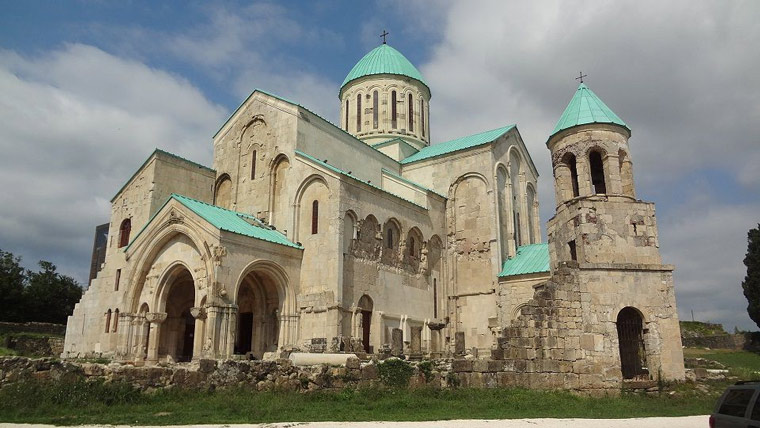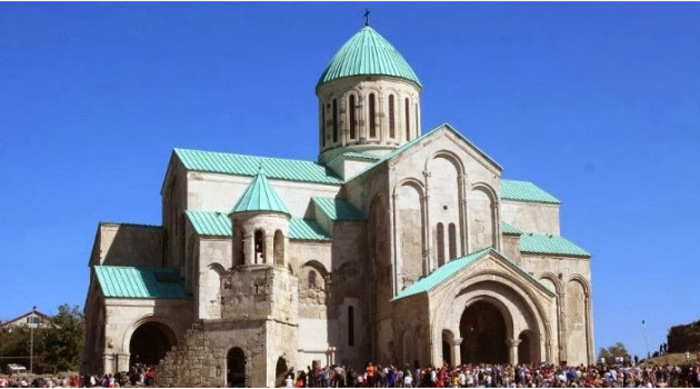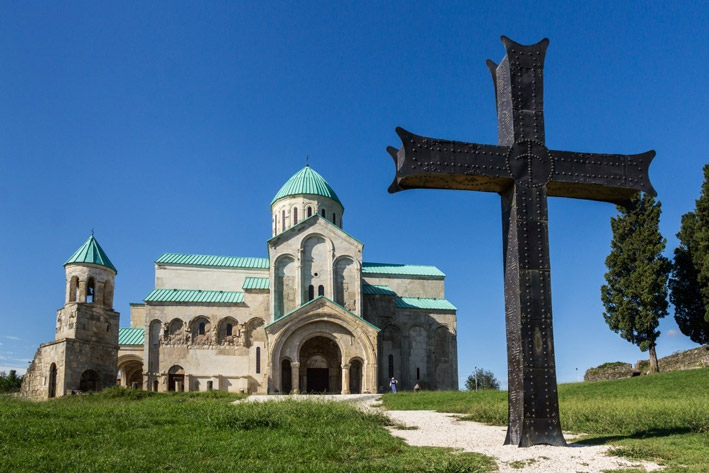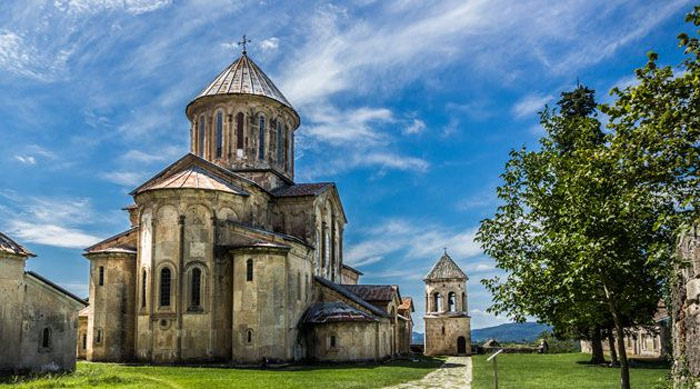Bagrati Cathedral and Gelati Monastery in Kutaisi
Unesco's Scientific, Educational and Cultural Organization has recognized Bagrati Cathedral and Gelati Monastery in Georgia's Kutaisi as a World Cultural Heritage in 1994.

The Bagrati cathedral is an ancient church, along with Gelati monastery, these two buildings are located in the city of Kutaisi in Imereti, western Georgia.
The Bagrati cathedral is also known as the Dormition Church or Kutaisi Church . The church is the symbol of Kutaisi city. This structure was built in the 11th century under the rule of King Bagrat III (also known as King Bagrati). This is considered a masterpiece in the history of Georgian medieval architecture. In 1692 during the Ottoman invasion, the church was devastated, the domes collapsed, the walls were also damaged.



Architectural works Bagrati cathedral and Gelati monastery are called medieval architectural masterpieces in Georgia
It was not until 1952 that this great architectural work was invested to restore and restore. The archaeological studies as well as the historical and artistic values of Bagrati Cathedral must also wait until that period begins.
Gelati Monastery was built in 1106, but this is still controversial. Some historians have suggested that other landmarks of the monastery were the only ones that were built under King David II (1089-1125).
Through many historical events along with nearly 1000 years of time, Gelati Monastery is still a lasting construction of Georgia. The monastery has an academy , where there are leading famous scientists, theologians and philosophers in Georgia. Many of them had previously worked in orthodox monasteries abroad or at Mangan Academy in Constantinople. Among these scientists, there are famous scholars like Ioane Petritsi and Arsen Ikaltoeli.


Due to being a large-scale, highly aesthetic architectural monument of the Gelati Academy, contemporaries often call this monastery "a new " and " Hellas ". Athos second ".
Not only has beautiful architecture, Gelati Monastery also possesses many murals and manuscripts from the 12th to the 17th centuries. Hand-painted murals and manuscripts are still well preserved so far. . Gelati Monastery is also home to many kings, including King David II (Davit Agmashenebeli, Georgian).

Because of the popularity of this architecture, the site has been invested regularly, but it is not the original renovation that has lost the integrity of the building, which leaves the reason for this legacy to be taken on the list of endangered world heritage.
During the 34th World Heritage Committee meeting in Brazil in 2010, the World Cultural Heritage Bagrati Cathedral and Georgia's Gelati Monastery were unanimously included in the list of members of the Committee. The categories are at risk.
The Heritage Committee members expressed a special concern about the conservation and the restoration of the center, which is damaging and disrupting the integrity of the heritage and requiring these actions to be immediately terminated. News.
After 5 years since being included in the list of legacies that need urgent protection, the legacies are at risk of being threatened if the host country has a legacy that does not take appropriate measures to conserve and develop. Heritage heritage value will be stripped of the title. So 2016 will be the time when Georgia must report on the status of this world cultural heritage.
The Bagrati cathedral and Gelati Monastery in Kutaisi are recognized by Unesco as a World Cultural Heritage by criteria (iv): It is an outstanding architectural work with many historical values as well as artistic value. A representative of Georgia's medieval architectural style.
- The scene inside Notre Dame Cathedral after the fire
- Architectural works in Novgorod
- Tushilumpo Monastery - A marvelous architecture of Tibet
- Du spring Truc Lam Tay Thien Monastery
- Aachen Cathedral - Germany
- Geghard Monastery and Azat Valley
- Sanahin Monastery - World Cultural Heritage in Armenia
- Great Cathedral of St Peter
- Monastery of Saint Catherine
- Chartres Cathedral
- The largest churches in the world
- St Paul's Cathedral
 Suzhou classic bonsai garden - China
Suzhou classic bonsai garden - China Chau Nguyen Dynasty
Chau Nguyen Dynasty Thai Son Mountain - World Wonder
Thai Son Mountain - World Wonder Ancient villages of Shirakawa-go and Gokayama
Ancient villages of Shirakawa-go and Gokayama